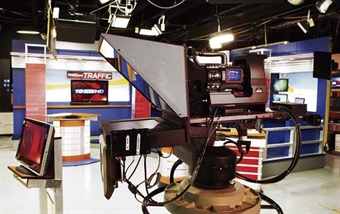Print v/s Broadcast Journalism: Spotting Differences!
Today journalism has expanded itself into a much wider field and profession. But, what one knows as mainstream journalism is the Printed medium of disseminating information. Later came the medium of television & radio.
All printed forms of information dissemination like newspapers, tabloids, magazines are a part of the Print Journalism. Mediums that use sound, live video and a studio anchor are a part of Broadcast Journalism.
Though both these are quite similar in their motive which is making people aware of the happenings around the world they might differ on many parameters.
A journalist can work for either print media or broadcast media depending on specific skills and interest. Here are a few points of difference in print & broadcast journalism:
1) Different Skills required
Print journalism is something that deals crucially with writing style and words. To be an editor in print media, one needs to have impeccable writing skill with a proper know-how of grammar, words and jargons. The art of articulation is a must while writing reports or new stories.
Broadcast journalism deals more with the way of speaking. The person who reports from either studio or field should have clear diction and oral skills. The main focus is on the way words are spoken to create a dramatic effect.
2) Different Styles used
In print medium, the writing style is the main attraction. The ‘Lead’ needs to be effective which is followed by the ‘nut grafe’, i.e., the answer of the basic questions like what, where, when & how. This is in turn followed by the crucial information & conclusion. This style is called the ‘Inverted Pyramid’ style which
includes the crucial information on the top followed by the background discussion. The source of the information is disclosed at the end of the sentence & the information in the beginning.
In broadcast journalism, the main focus is on the tonality used by the anchors and their diction. They use the technique of ‘Dramatic Unity’ where the cue is given first creating suspense which followed by the climax. The headlines are simple one liner that provides with cues to interest people. Also, the source of the information is mentioned first in light tone followed by the crucial news in a much heavier tone.
3) Difference of Audience
The major drawback of print journalism is that it can only be read by literate people. It also consumes more time & needs to be followed regularly because the news it comprises of is a day late. A newspaper or a magazine can be read once in a day, it does not offer different stories when read again. Also, the biggest challenge for print media is to manage the space in such a way that every news can fit into a prescribed window. However, the news piece can be retained forever.
Whereas broadcast journalism like TV or radio can be easily viewed & heard by every kind of person. One can switch the channel on at any time & get the latest updates. One can get different news story every time he/she switches on the channel. However, the biggest challenge for them is to fit a particular show in a given window of time. Also, a news story cannot be retained until it is recorded.





10 Comments. Leave new
Well written, Deepika!
Nicely explained the difference
Well explained.
Well articulated!
very nice!
Nicely articulated !!
Well written
this is something that i was just surfing through on google today, but you’ve obviously explained it clearer! 🙂
Well differentiated.
Very well written great efforts